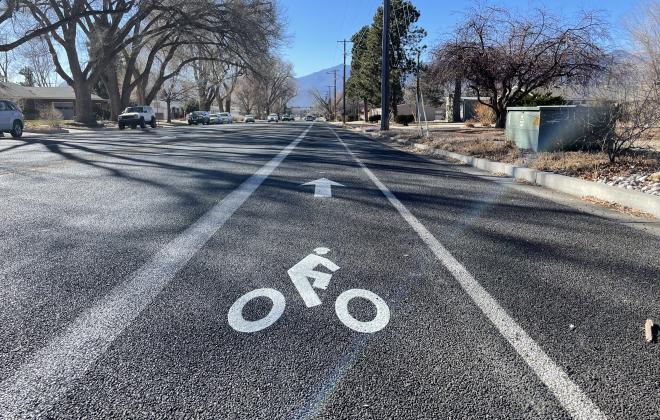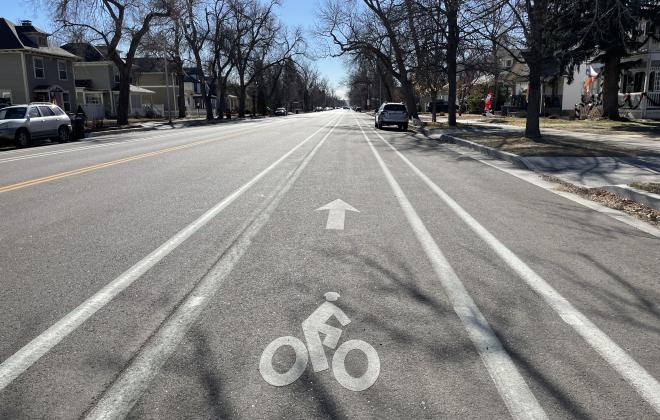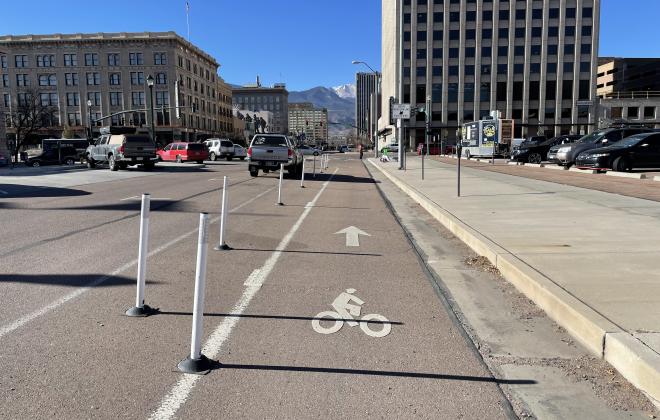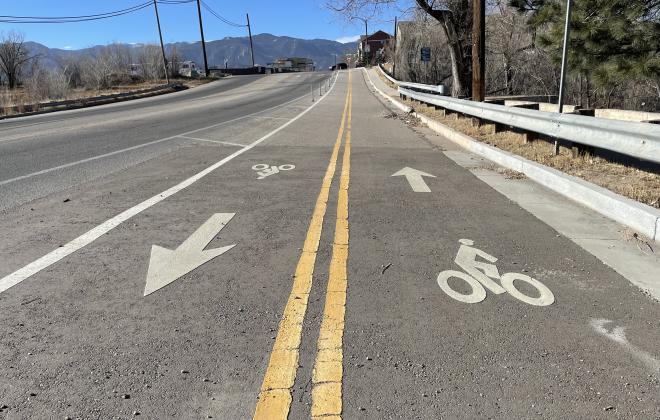Conventional Bike Lanes
Bike lanes designate an exclusive space for bicyclists through the use of pavement markings and signage. The bike lane is located adjacent to motor vehicle travel lanes and flows in the same direction as motor vehicle traffic. Bike lanes are typically on the right side of the street, between the adjacent travel lane and curb, road edge, or parking lane.
Bicyclists may leave the bike lane to pass other bicyclists, make left turns, avoid obstacles or debris, and avoid other conflicts with other users of the street.
Benefits of Conventional Bike Lane
- Enable bicyclists to ride at their preferred speed without interference from prevailing traffic conditions.
- Facilitate predictable behavior and movements between bicyclists and motorists.
- Increases bicyclist comfort and confidence on busy streets.
- Creates separation between bicyclists and automobiles.
- Increases predictability of bicyclist and motorist positioning and interaction.
- Increases total capacities of streets carrying mixed bicycle and motor vehicle traffic.
- Visually reminds motorists of bicyclists’ right to the street.

Buffered Bike Lanes
Buffered bike lanes are standard bike lanes that are paired with a designated buffer space to separates the bicycle lane from the adjacent motor vehicle travel lane and/or parking lane.
Benefits of Buffered Bike Lanes
- Provide greater separation between motor vehicles and bicyclists
- Depending on width of the buffer and width of the bike lane, can provide adequate space for bicyclists to pass another bicyclist without encroaching into the adjacent motor vehicle travel lane.
- Provide additional width so bicyclists can avoid doors opening in their path – greatest benefit when buffer is provided between parked cars and the bike lane.
- Provide a wider dedicated bicycling width without making the bike lane appear to be a travel lane or a parking lane.
- Can appeal to both beginner and accomplished bicycle users – lower stress.
- Can encourage bicycling – contributes to the perception of safety among users.

Protected Bike Lanes
Protected bike lanes have a physical barrier between bike and vehicle lanes. Protected bike lanes define and allocate space exclusively for people on bikes and don't share space with pedestrians or motorized traffic except for brief mixing zones such as at intersections.
The physical barriers can be planters, curbs, parked cars or posts that separate the bike and auto traffic. Protected bike lanes are often used on busy streets.
Benefits of Protected Bike Lanes
- Safer for cyclists and cyclists feel safer
- Make cycling more fun and pleasant
- Safer for kids on bikes and less experienced cyclists

Two-Way Cycle Tracks
Two-way cycle tracks are physically separated cycle tracks that allow bicycle movement in both directions on one side of the road. A two-way cycle track may be configured as a protected cycle track—at street level with a parking lane or other barrier between the cycle track and the motor vehicle travel lane—and/or as a raised cycle track to provide vertical separation from the adjacent motor vehicle lane.
Two-Way Cycle Track Benefits
- Dedicates and protects space for bicyclists by improving perceived comfort and safety. Eliminates risk and fear of collisions with over-taking vehicles.
- Reduces risk of ‘dooring’ compared to a bike lane, and eliminates the risk of a doored bicyclist being run over by a motor vehicle.
- On one-way streets, reduces out of direction travel by providing contra-flow movement.
- Low implementation cost when making use of existing pavement and drainage and using parking lane or other barrier for protection from traffic.
- More attractive to a wide range of bicyclists at all levels and ages.

